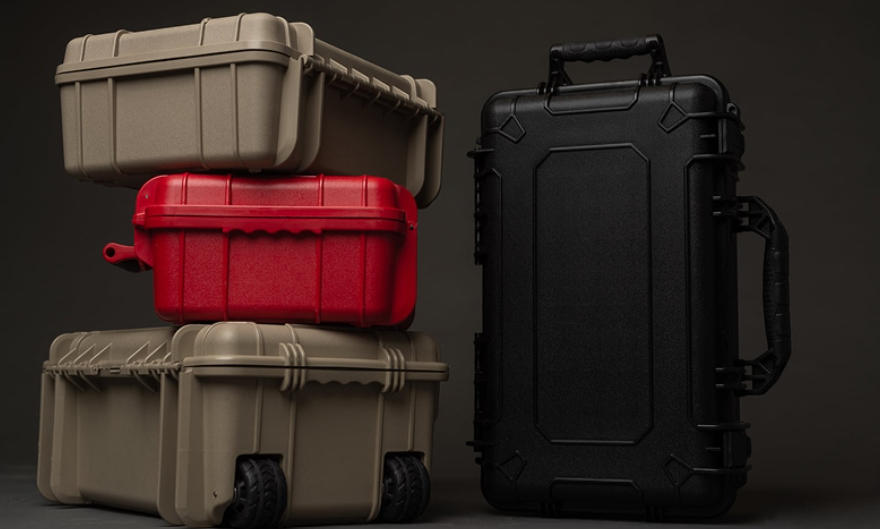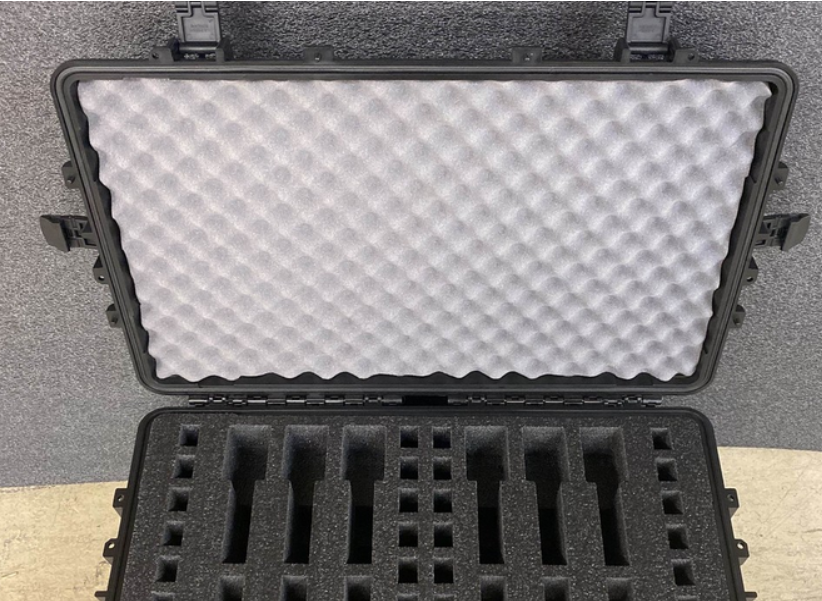How to Choose Durable Cases for Cycling Gear

Choosing the proper protective case for your cycling gear is an investment for any cyclist who wants to keep equipment safe, organised, and ready for adventure.
Whether you’re planning to commute through the city, travel cross-country for a race, or simply want to keep your gear in top condition season after season, the proper case can make all the difference in protecting your helmet, shoes, tools, and bike components from damage and the elements.
With various case materials and features available, from tough, impact-resistant shells to weatherproof fabrics and lockable closures, making the best choice involves more than just grabbing the nearest bag.
This guide will help you find a durable cycling gear case, ensuring your investment pays off with every ride and trip.
Why You Need a Hard Case for Cycling Gear
Unlike soft bags or cardboard boxes, a hard case acts like a rigid exoskeleton that absorbs and spreads the force of bumps, drops, or pressure, preventing damage to delicate components like carbon frames, wheels, and gears.
Here are the most common damage scenarios cyclists face and why protective cases matter:
Impact
The most obvious threat is a high-speed crash on a rocky descent that could cause your bike to tip over against a wall. To survive rough baggage handling, impact-resistant custom hard cases from the Royal Case Company are essential for fly-to-ride adventures.
Vibration
Don’t underestimate the destructive power of a long day on bumpy roads. Constant, high-frequency rattling can loosen sensitive components and slowly shake internal parts apart.
Weather
A surprise downpour, a deep creek crossing, or persistent fog can turn a water-resistant gadget into a paperweight. A properly sealed hard case offers proper waterproof protection.
Soft vs. Hard Storage
Understanding the key differences between soft and hard storage for cycling gear can help you choose the best protection.
Soft Storage
Soft storage options like padded bags and backpacks offer lightweight, flexible, and often more affordable solutions. When empty, they are easier to carry and store and provide decent protection against scratches and minor impacts.
However, soft cases are less effective against heavy impacts, crushing forces, or rough handling during travel, potentially leaving delicate parts vulnerable to damage.
Hard Storage
A hard storage case, on the other hand, provides superior protection due to its rigid construction. It is designed to absorb shocks and distribute pressure evenly, making it ideal for transporting valuable or fragile cycling gear, especially bikes with carbon components.
Hard cases are often weather-resistant and waterproof and come with custom padding or secure mounts to immobilize your gear. The trade-offs include heavier weight, bulkier size, and usually higher cost.
A hard case with expensive gear is typically the best investment for optimal durability and peace of mind.
Key Features Checklist

Use this list the next time you’re shopping for a protective case for your cycling adventures. It will help you evaluate different options and find the best fit for your needs.
Look for high-impact polymers like ABS or polycarbonate. These materials are engineered to flex slightly under impact and return to shape, absorbing energy that would otherwise damage your gear.
Ingress Protection (IP) Rating
An IP67 rating means the case is completely dust-tight and waterproof when submerged in 1 meter of water for 30 minutes. This is your guarantee against a failed river crossing.
Interior Configurability
Your gear changes, and your case should adapt. Pluck-n-pull foam allows for a custom-fit nest, while padded dividers offer flexibility to reconfigure as your kit grows.
Mounting & Strapping Points
Molded loops or dedicated slots are essential for on-bike use. They let you securely lash the case to a rack or frame without fear of it rattling loose on rough terrain. If you travel, look for reinforced padlock holes. These deter theft while allowing for security inspections if needed.
How to Choose the Right Size & Configuration
Choosing the right hard case size for your cycling gear is crucial to ensure optimal protection and convenience.
First, measure your gear carefully, including the bike frame, wheels, and any accessories you want to store inside. Allow extra space for padding or foam inserts to cushion the equipment and prevent movement inside the case during transport.
Second, consider the type of cycling gear you have. Racing bikes with aerodynamic frames might need custom-shaped compartments, while standard mountain or road bikes require a more rectangular interior.
Third, think about your typical mode of transport; airplanes, cars, or bikes may have different size and weight restrictions that influence case choice.
Finally, prioritize a hard case with adjustable or modular interiors to accommodate future gear upgrades or other setups. This will make your investment more versatile and durable.
This approach helps ensure your cycling gear is securely encased without wasted space or unnecessary bulk.
Packing, Mounting & Maintenance Tips
Proper packing and maintenance techniques can significantly extend the life of your cycling gear cases and ensure your equipment stays protected.
Here are essential tips to maximize protection and durability:
- Shock Isolation: Position delicate items with screens in the center of the case, surrounded by thick foam. Heavier items like tools or battery packs should be placed lower to keep their mass from impacting electronics in a crash.
- Strap Smart: Redundancy is key when mounting a case on your bike. Run a high-quality strap through at least two opposing loops. Avoid mounting on the downtube if you frequent rocky zones, as flying debris can target that area.
- Seal Check: Before a multi-day trip, test your gasket. Close the lid on a small piece of tissue paper so it’s half in, half out. Dunk the case in a sink for thirty seconds. If the tissue comes out dry, the seal is good.
- Post-Ride Cleanup: Dirt and grit in the latch crevices and gasket channel will shorten the seal’s life. Use an old toothbrush with mild soap and fresh water to clean these areas. To keep the O-ring supple, apply a thin layer of silicone grease every few months.
Following these packing, mounting, and maintenance practices will help ensure your case performs reliably for years.
Taking a few extra minutes to pack strategically and maintain your seals properly can mean the difference between gear that survives the journey and expensive replacements.
Audit Your Gear, Protect Your Stoke
A durable bike case isn’t glamorous, but neither is replacing a broken camera lens halfway through an epic trip. You can select a vault to guard your gadgets through any adventure by weighing shell materials, IP ratings, and interior configurations.
Take a few minutes to audit the electronics and tools you can’t ride without, and choose a case using the checklist above. Your future self will thank you the next time your bike takes an unexpected tumble on the trail.
